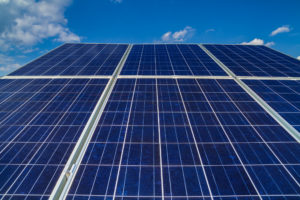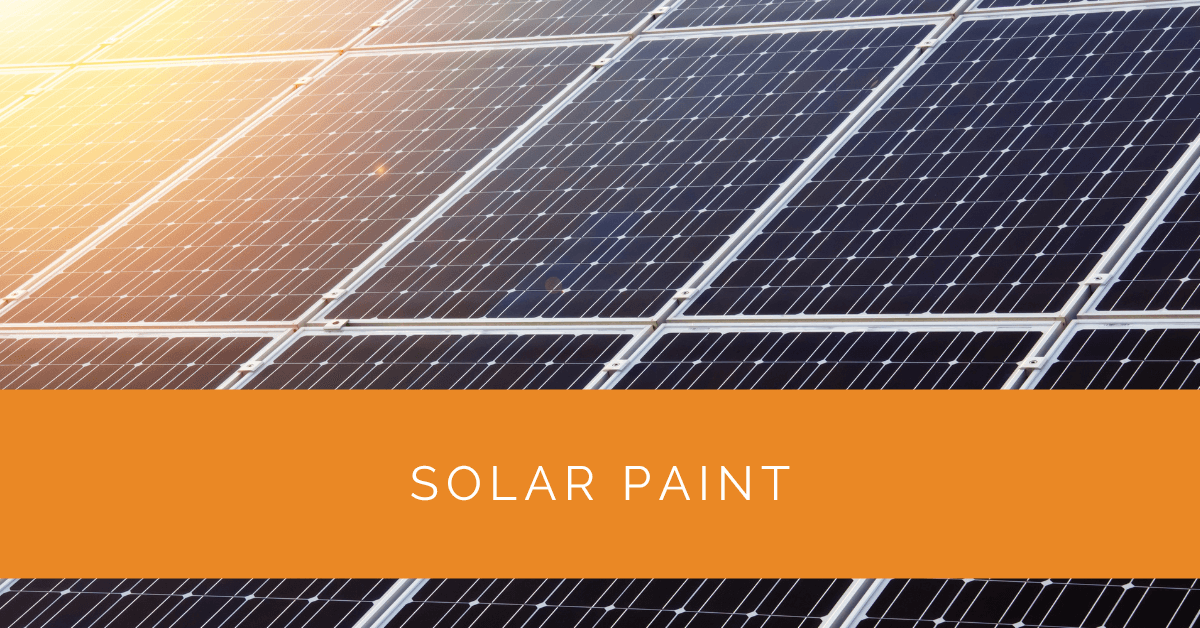The world of solar energy is constantly evolving, with researchers and scientists exploring innovative ways to capture and harness sunlight. One exciting development in this field is the concept of solar paint, which can potentially revolutionize solar energy generation. This article will delve into the intricacies of solar paint, its working principles, its different types, and its potential future impact on the clean energy landscape.
Contents
- 1 Key Takeaways
- 2 Understanding Solar Paint: How Does it Work?
- 3 Types of Solar Paint
- 4 The Future of Solar Paint
- 5 Availability and Commercialization of Solar Paint
- 6 Expert Insights From Our Solar Panel Installers About the Potential of Solar Paint
- 7 Experience Solar Excellence with Us!
- 8 Conclusion
- 9 FAQ
Key Takeaways
- Solar paint, also known as photovoltaic paint, is a revolutionary technology that can transform everyday surfaces into solar energy-generating structures.
- Different types of solar paint, such as perovskite and quantum dot, offer unique advantages and applications for clean energy generation.
- While still in the early stages of development, the future of solar paint holds promise for advancements in material science, integration into building design, and collaboration to bring it to widespread availability and commercialization.
Understanding Solar Paint: How Does it Work?
Solar paint, also known as photovoltaic paint, is a revolutionary technology that can potentially transform how we harness solar energy. By understanding the working principles of solar paint, we can appreciate its unique capabilities and role in advancing clean energy solutions.
Overview of Solar Paint Technology
Solar paint is a specialized coating that contains photovoltaic materials capable of capturing sunlight and converting it into usable electricity. Unlike traditional solar panels, which consist of rigid and bulky modules, solar paint offers flexibility and versatility in application. It can be applied like regular paint onto various surfaces, enabling seamless integration of solar energy generation into different structures.
Working Principle of Solar Paint
The working principle of solar paint revolves around the photovoltaic effect. When sunlight hits the painted surface, the embedded photovoltaic materials absorb photons, which excite the material’s electrons. This excitation creates an electric current that can be harnessed for powering electrical devices or stored in batteries for later use. The photovoltaic materials within the solar paint act as semiconductors, allowing the conversion of light energy into electrical energy.
Types of Solar Paint
Solar paint encompasses various types, each with unique characteristics and materials. These different types offer distinct advantages and cater to diverse application requirements. By exploring the types of solar paint available, we can understand the breadth of possibilities they offer for clean energy generation.
Perovskite Solar Paint
Perovskite solar paint utilizes perovskite materials in its formulation. Perovskites have gained significant attention in the solar industry due to their excellent light-absorbing properties and high power conversion efficiencies. These materials can be synthesized in liquid form, making it easier to apply as a paint-like coating. Perovskite solar paint has the potential to achieve high performance and cost-effectiveness, paving the way for widespread adoption in solar energy applications.
Quantum Dot Solar Paint
Quantum dot solar paint employs quantum dots, which are semiconductor nanocrystals, as the active material. Quantum dots possess unique optical properties, allowing them to absorb sunlight across various wavelengths. They can be precisely engineered to capture specific light colors, increasing energy conversion efficiency. Quantum dot solar paint offers versatility and tunability, making it suitable for various lighting conditions and environments.
Colloidal Quantum Dot Solar Paint
Colloidal quantum dot solar paint is a variant of quantum dot solar paint that utilizes colloidal quantum dots in its formulation. Colloidal quantum dots are small nanocrystals suspended in a liquid solution. They offer advantages such as solution processability and compatibility with roll-to-roll manufacturing techniques. Colloidal quantum dot solar paint shows promise in achieving high efficiency and stability, making it a potential candidate for large-scale solar energy applications.

The Future of Solar Paint
The future of solar paint holds immense potential for transforming the clean energy landscape. As research and development efforts continue, solar paint is poised to be pivotal in advancing solar energy generation and adoption. Several key aspects shape the future of solar paint technology and its integration into our daily lives.
Advancements in Material Science
Ongoing research focuses on developing new photovoltaic materials and optimizing their performance within solar paint formulations. Scientists are exploring ways to enhance solar paint’s stability, durability, and efficiency to ensure long-term viability and competitiveness with traditional solar panels. Advancements in material science will unlock new possibilities and push the boundaries of solar paint technology.
Integration into Building Design and Infrastructure
Solar paint’s flexibility and ease of application make it an ideal solution for integrating solar energy generation into building designs and infrastructure. Imagine entire facades, roofs, and structures coated with solar paint, transforming them into efficient energy generators. The seamless integration of solar paint into architectural elements can revolutionize how we harness clean energy and promote sustainability on a larger scale.
Collaboration and Investment
Collaboration between research institutions, manufacturers, and investors is essential to bring solar paint to its full potential. Continued investment in research and development will drive innovation, scale up production capabilities, and improve cost-effectiveness. Collaboration across sectors will facilitate knowledge exchange and create pathways for the commercialization and widespread adoption of solar paint.
Availability and Commercialization of Solar Paint
While solar paint shows immense promise, its availability and widespread commercialization are still in the early stages. Research institutions and innovative companies are actively working to refine solar paint formulations, address technical challenges, and enhance its performance. Demonstrations of solar paint applications have showcased its potential in controlled environments, but more work is needed to ensure its scalability and durability.
Progress in Availability
Solar paint availability is gradually expanding as research progresses and technologies mature. Some early adopters, including research institutions and forward-thinking companies, are already exploring solar paint applications in real-world settings. These early-stage deployments are important stepping stones toward wider availability and market acceptance.
Market Penetration and Consumer Adoption
The future market penetration of solar paint depends on several factors, including technological advancements, cost-effectiveness, regulatory frameworks, and consumer demand. As solar paint technology advances and becomes more efficient, cost-effective, and reliable, the potential for widespread consumer adoption increases. Homeowners and businesses may find value in integrating solar paint into their properties, taking advantage of its seamless integration, aesthetic appeal, and potential energy cost savings.
Moreover, governments and regulatory bodies play a vital role in incentivizing the adoption of solar paint through supportive policies, subsidies, and grants. These initiatives can encourage investment in solar paint technologies, spur innovation, and accelerate market growth.
As solar paint continues to evolve and mature, we can anticipate a future where it becomes a widely available and viable option for clean energy generation. From residential rooftops to commercial buildings, solar paint has the potential to transform our built environment into efficient and sustainable power sources.
Expert Insights From Our Solar Panel Installers About the Potential of Solar Paint
Solar paint represents a revolutionary leap in the field of renewable energy. Its potential to turn everyday surfaces into energy-generating assets is truly groundbreaking.
Lead Renewable Energy Scientist
The beauty of solar paint lies in its versatility. Unlike traditional solar panels, it can be seamlessly integrated into building designs, offering an aesthetically pleasing solution to sustainable energy generation.
Senior Solar Installation Engineer
As we continue to refine the efficiency and durability of solar paint, we’re looking at a future where clean energy solutions are more accessible and widespread. This technology could play a significant role in reducing our carbon footprint.
Solar Technology Specialist
Experience Solar Excellence with Us!
Trust in Solar Panels Network USA, where our seasoned experts deliver top-quality solar solutions for homes and businesses nationwide. With a legacy of countless successful installations and a commitment to sustainable energy, we’re your reliable partner in the solar journey. Ready for a brighter, eco-friendly future? Call us now at (855) 427-0058 and harness the power of the sun!
Conclusion
Solar paint represents an exciting frontier in the world of clean energy. Its ability to turn everyday surfaces into solar energy-generating structures holds great promise for a sustainable future. Although still in the early stages of development, solar paint technology continues to advance rapidly, driven by ongoing research and the collective efforts of scientists, engineers, and innovators worldwide. As the potential of solar paint unfolds, it can reshape our energy landscape and contribute to a greener and more sustainable world.
FAQ
Is solar paint real?
Yes, solar paint is a real technology that is being developed and researched by scientists and engineers. It holds great potential for transforming surfaces into solar energy generators.
How effective is solar paint?
The effectiveness of solar paint depends on various factors, including the type of solar paint used and its efficiency in converting sunlight into electricity. While still in development, certain types of solar paint, such as perovskite and quantum dot solar paint, have shown promising levels of efficiency.
How does solar paint work?
Solar paint incorporates photovoltaic materials that can capture sunlight and convert it into electricity. When sunlight hits the painted surface, the embedded photovoltaic materials initiate the photovoltaic effect, generating an electric current that can be harnessed for power.
How long does solar paint last?
The longevity of solar paint depends on factors such as the quality of the materials used, environmental conditions, and maintenance. As the technology continues to advance, efforts are being made to enhance the durability and stability of solar paint to ensure long-lasting performance.
About the Author
Solar Panels Network USA stands at the forefront of solar energy solutions, driven by a team of seasoned solar engineers and energy consultants. With over decades of experience in delivering high-quality solar installations and maintenance, we are committed to promoting sustainable energy through customer-centric, tailored solutions. Our articles reflect this commitment, crafted collaboratively by experts to provide accurate, up-to-date insights into solar technology, ensuring our readers are well-informed and empowered in their solar energy decisions.

